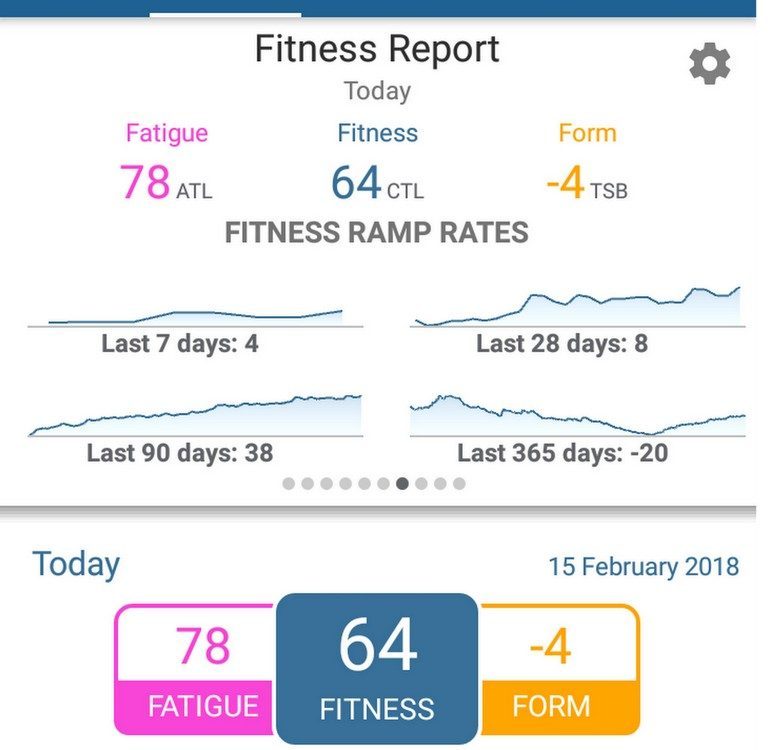In the last year, DW’s Pants has become our shorthand for getting overly focused on any given metric. If you’re new to the podcast or the site, this may not make any sense. So, allow us to explain:

D.W. is our miniature dachshund. He likes to dig, sprint, smell stuff, get into small spaces, go for walks, sleep, cuddle with Molly and bark at things (especially squirrels). Runners run, Bikers bike, and Dachshunds bark. Sometimes, he strays from his usual routine and his focus on being the best Dachshund, and he becomes obsessed with a pair of Molly’s pants. He can be forgiven for focusing on these pants since they have a lot of the qualities he is trying to improve on. The pants smell like Molly, he can cuddle them and he can pull them into tight spaces. He holes up in a dark place, much like Gollum from Lord of the Rings, and protects his Precious Pants. When he has the pants, he’s focusing 110% on them, ignoring the potential to cuddle or play with us. He misses chances to go outside to dig, and the limited opportunities to find and bark at pesky squirrels.
Metrics in training can become ‘precious’ like Pants. Pants are D.W.’s metric to rule them all, despite taking away the things that he likes (barking & Molly) and the things he is trying to get better at like digging, barking at squirrels, and long-distance walks. For some athletes, the one metric can be things like weight, HRV (variability between heartbeats), CTL (also called ‘fitness score’), or even mileage. These are all valuable things that we use personally and with clients BUT sometimes good things cause bad things.
As endurance athletes, we have a bunch of things we can do each day (and that we hopefully LOVE to do) in training. We also are bombarded with numerous ways to track, judge, share or despair over our training. There is a lot that goes into riding/racing a bike well. It is convenient to talk about ‘fitness’ as your bike power or something like Training Stress Score, but what if we consider fitness as you being ‘fit for a task’.
You could get faster by improving your technical, mechanical, tactical, pacing, planning, or other ‘skills’ that go into being ‘fit’ to race. Your training has many elements beyond pedaling. Can you think of a friend who does well in races because they are a ‘smart racer’ or ‘great technical rider’ or ‘great at pacing’? While it might seem overwhelming to think of all the ways you could improve, it is also empowering for those that don’t have more time or energy to spend pedaling their bike and helpful to know that you can improve even without riding or even by ‘just riding for fun’.
“When a measure becomes a target, it ceases to be a good measure.” –Goodhart’s Law
The above quote really gets to the central issue with how metrics can get abused. For some people, these metrics can negatively affect your behavior in a way that pulls you away from doing the training that improves performance and THAT YOU ENJOY. It pulls you away from the rich training environment that includes people, technical aspects, and variable paces to make you ‘fit for the task’ of your goal event. Just as D.W. focuses on pants at the cost of missed snuggles and squirrels, an excessive focus on ‘optimizing’ weight or TSS or your ONE METRIC will miss out on ‘critical moments’ that come in group rides, or by riding event-like terrain or just simply miss the fun you might have in your training otherwise.
As an example: If an athlete’s ONE METRIC was to maximize your CTL/TSS (create the most intensity and time they can) they would ride an indoor trainer and ride at a moderate output every day to maximize the limited time they have to train and avoid any stoppages or coasting. This athlete would skip off days and weeks to keep CTL constantly increasing. They would find it levels out over time and then start to wake up earlier to get more time in to get more TSS each day so their average (CTL) will nudge upwards demonstrating (to them) that they are fit to ride their bike outside, with people, on technical offroad terrain, in a race that involves sprinting and coasting frequently. This is making the metric into the goal and is not how the metric was meant to be used. Missing are friends/peers, off-road terrain, skills (the balance?), tactics, mechanical testing, navigation, and visual/attention training. With a singular focus, you lose the rich ecology of training.
So what are you supposed to do?
In your general base season (many months away from your racing/riding season) a focus on showing up frequently and consistently (how many workouts a week?) and learning new things (sports and skills) are likely good metrics to keep an eye on. Gradually increasing your work capacity might also be relevant and could be shown in tss/day (CTL), kilojoules (energy spent), duration, or simply how energetic you are during the day. Qualitative metrics are very good to develop as well, we love when athletes connect their session RPE (how hard was that ride) and how they felt on a ride. Many people hate to use or talk about feelings this is perhaps a good indicator. It’s worth spending time reflecting on how hard a workout was and how you felt in training. Most rides should feel good and be pretty easy. (See Stephen Seiler and the myth of No-Pain-No-Gain). These metrics over time start to show that you are feeling good more often (and give an alarm if you have more than 1 day with poor feeling) and getting more work done for similarly difficult rides (your 3/10 ride becomes a more burly ride!). Towards the end of the base season, things start clicking if you have been showing up frequently.
As your race season approaches (under 3 months) you can start to be more concerned about times, paces, and specific durations or loads but don’t attach your worth or ‘fitness’ to these. Let your rides show you how your fitness is progressing. As your event approaches you should gradually become more specific with your training. You become more ‘adapted’ to the goal environment. If you are racing a long-distance, hot, mountain bike event then in the 2-3 months before the event the key metrics are whether you are frequently riding on your mountain bike, on race-like terrain, in hot conditions, with your fueling/hydration strategy and similar technical elements and incorporating some riding with people.
Building a messy checklist like this helps you think about fitness as being the whole package of things that makes up the awesomeness that is you and your performance rather than one comforting pair of pants. Be careful chasing numbers.
Perhaps a good thought to leave on is a quote from CTL, TSS, and FTP creator Andy Coggan: “The best predictor of performance is performance itself.”
If you want to hear more on this, we discussed it on this episode of The Consummate Athlete Podcast!






